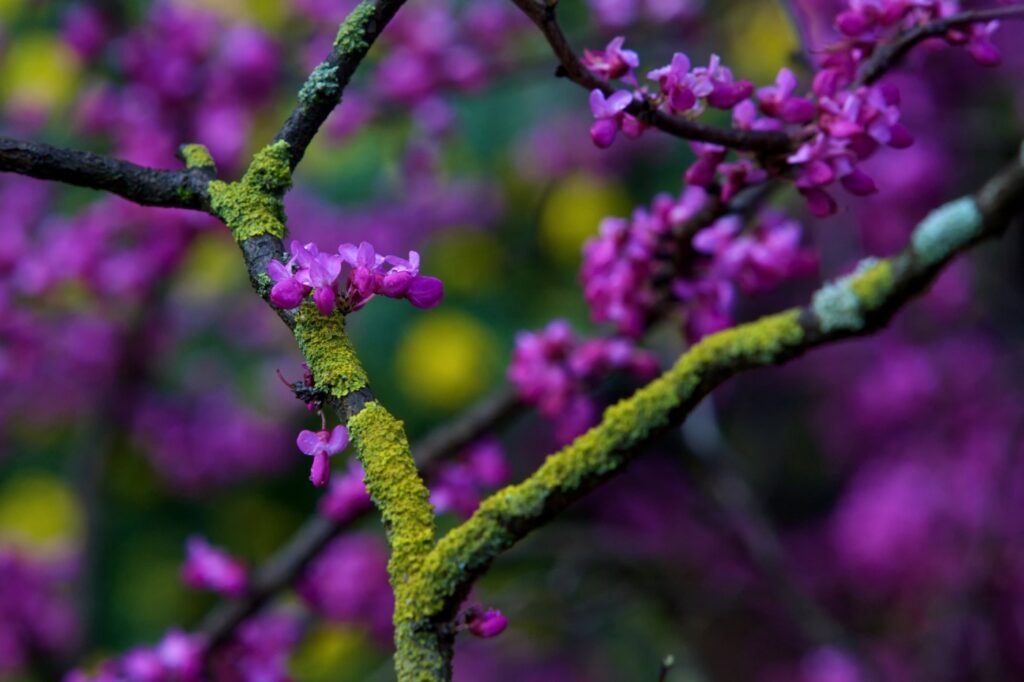
Q. My 20-something-old redbud tree has developed lichens on the trunk, which is a first. Do I have a problem and is there anything I should do? I have another one in the yard which doesn’t have this problem.
When we see something weird growing on tree bark, it is usually algae, lichens, moss, or fungi (or a combination of these). These can be gray, white, green, or even orange. Most of these organisms can be classified as epiphytes, or simply put, things that live on other things.
Algae, moss, and lichens (a combination of algae and fungi) are more likely to appear on older trees due to their slower growth. Younger trees’ trunk diameter increases quickly during periods of rapid growth, so the epiphytes are still present but spread out and less obvious. In most cases, epiphytes are harmless. They live off material already present on bark or simply condensation and dust particles in the air. “Air plants” are epiphytes.
Sometimes their presence can indicate an adverse growing condition that should be corrected. Algae and moss grow where there is excessive moisture and inadequate light. Irrigation malfunctions or poor drainage can spell doom for a tree, so make sure these conditions are not present. Poor air circulation can cause increased humidity. Inadequate light might be a result of excessive shade cast by nearby plants that have grown too large or blocked sunlight from a wall or fence. Lichens, moss, and algae are frequently seen on trees in a mature landscape that might need to be thinned out.
Fungi is frequently harmless, but its presence can be a cause for concern. One of the most common fungi found on trees is Armillaria mellea. This fungus grows on a wide range of hosts, both dead and alive. Its fruiting bodies (the visible part of a mushroom) appear as off-white shell-shaped growths, usually found at the base of the trunk. It frequently shows up on mature, drought-adapted trees that suddenly become waterlogged. Look for it after heavy rains that follow a dry summer. Your photo looks more like armillaria than lichens.
Armillaria accompanied by other symptoms of distress indicates a tree in trouble. Look for cracked or peeling bark, sap leakage or dried amber. Is the root collar covered with soil? If so, gently excavate using hand tools to uncover the collar and some of the root flare. Remove any nearby plants that require extra water, such as thirsty annuals.
Armillaria is slow-growing and is subject to attack by other soil fungi, particularly Trichoderma. If drainage conditions are corrected promptly, armillaria can, in many cases, be defeated. Obviously, it can’t be eradicated from the soil, but you can knock it down.
Fungicides are not effective against armillaria, so you can skip that expense.
Los Angeles County
[email protected]; 626-586-1988; http://celosangeles.ucanr.edu/UC_Master_Gardener_Program/
Orange County
[email protected]; 949-809-9760; http://mgorange.ucanr.edu/
Riverside County
[email protected]; 951-683-6491 ext. 231; https://ucanr.edu/sites/RiversideMG/
San Bernardino County
[email protected]; 909-387-2182; http://mgsb.ucanr.edu
